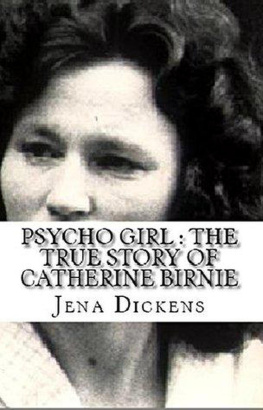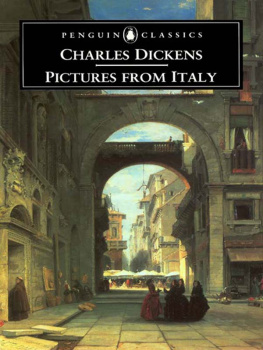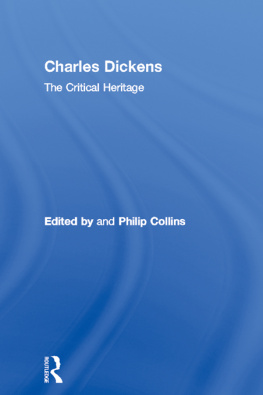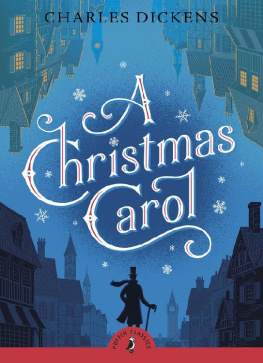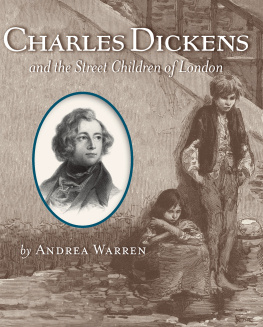Acknowledgments
Dozens of people in several countries have supported my work on The Other Dickens for the past ten years, generously offering their time, resources, and insight. I owe many, many thanks to family members, friends, colleagues, Dickens scholars, archivists, librarians, and descendants of Catherine Dickens and those in her circle. Among the first to believe it might be a good idea to write this book was Anne Thompson, chair of the Bates College English Department in the 1990s. Thanks go to her and to Michael Slater of Birkbeck College, University of London, whose pioneering work on Dickens and Women informs my own and who has kindly shared his ideas and material with me. In the earliest stages of my research, Andrew Xavier of the Charles Dickens Museum provided me with crucial and much appreciated help. Lucy Gent and Malcolm Turner welcomed me to 70 Gloucester Crescent, Regents Park, the home of Catherine Dickens from 1858 to 1879, providing an unexpected visitor with a tour of the premises and tea in the garden. Several members of the Japan Dickens Fellowship supported this project from the outset, inviting me to speak about Catherine Dickens with their students. For their warm welcome and interest, I thank Eiichi Hara of Tokyo Womans Christian University, Toru Sasaki of Kyoto University, and Kensuke Ueki of Hiroshima University. I am grateful to Grace Moore for helping to host my visit to the University of Exeter when she was a graduate student, and for her enthusiasm about the project. In Lewiston and in London, my colleague Cristina Malcolmson has provided me with a host of useful suggestions for the book and helped me define its aims.
Many librarians and archivists have contributed to The Other Dickens by arranging research visits, answering questions, and making available the primary sources on which I draw. Those to whom I owe thanks include Robert Bearman, Shakespeare Birthplace Trust; Iain G. Brown, Sheila Mackenzie, and Robin Smith, National Library of Scotland; Kathleen Cann, Cambridge University Library; Becky Cape, Lilly Library, Indiana University; Brian Carpenter, Devon Record Office; Revinder Chahal, Victoria and Albert Museum; Philip N. Cronenwett, Special Collections, Dartmouth College Library; Bernard R. Crystal, Rare Book and Manuscript Library, Columbia University; Howard Doble, London Metropolitan Archives; Tracey Earl and Isobel Long, Coutts Bank archive; Corrina S. Flanagan, Eva Guggemos and Naomi Saito, Beinecke Rare Book and Manuscripts Library, Yale University; Imogene Gibbon, Nicola Kalinsky, Susanna Kerr, Kim Macpherson, and Helen Watson, Scottish National Portrait Gallery; Elizabeth Gow, John Rylands University Library, University of Manchester; Philip Graham, NMRS Public Services; Sue Hanson, Kelvin Smith Library, Case Western Reserve University; Rosalinda Hardiman, Portsmouth City Museum and Records Office; Oliver Hawkins, Meynell Family Papers; Elizabeth James, the British Library; Kate Jarvis, Manuscripts Department, National Maritime Museum; Karen Johnson, Manuscript Section, National Library of Australia; Mike Kelly, Fales Library, Elmer Holmes Bobst Library, New York University; Deborah King, Chicago Historical Society; Anna Kozlowska, Manuscript Department, Jagiellonian Library; Karen Lightner, Jol Sartorius and Joseph Shemtov, Rare Book Department, the Free Library of Philadelphia; Deborah Mays, Historic Scotland; Claire McCann, Special Collections and Archives, University of Kentucky; Karen Morgan, North London Collegiate School; Christine Nelson, the Morgan Library & Museum; Rodney Phillips, Berg Collection, the New York Public Library; David Powell and David Wykes, Congregational Library; Amy K. Presser, Milton S. Eisenhower Library, Johns Hopkins University; Sandra M. Rayser, Historical Society of Pennsylvania; Gayle M. Richardson, Henry E. Huntington Library; Michelle R. Sampson, Wadleigh Memorial Library; David E. Schoonover, University of Iowa Libraries, Special Collections; Florian Schweizer, Charles Dickens Museum; Margaret M. Sherry, Princeton University Library; Carol A. Sommer, William Andrews Clark Memorial Library, University of California, Los Angeles; Tim Stanton, Crawley Library; Ian Stewart, Dunedin Public Libraries; Brian A. Sullivan, Harvard University Archives, Pusey Library; Jennifer Thorp, New College Archives, Oxford University; Marian Turnbull, Leeper Library, Trinity College, University of Melbourne; Tara Wenger, Harry Ransom Humanities Research Center, University of Texas at Austin; Simon Whitby, Liverpool Record Office; and Sarina Wyant, Special Collections, University Library, University of Rhode Island. For their time and effort on behalf of this book, I must give special thanks to Elizabeth James, Christine Nelson, Gayle M. Richardson, and Jol Sartorius.
For scholarly expertise, suggestions, and help with research questions, methods, and materials, I owe thanks to Colin Axon; Geoff Allen, Mark Lemon Society; Thomas F. Baskett, Faculty of Medicine, Dalhousie University; John Bowen, University of York; Rebecca Corrie, Matt Duvall, Melinda Harder, Tom Hayward, Perrin Lumbert, and Christine McDowell, Bates College; Jean Elliott, Patrick Leary, manager of the Victoria discussion list; Paul Lewis, Wilkie Collins Society; Leon Litvack, Queens University, Belfast; Adam Mills, Rare Books, Cambridge; David Parker, Kingston University; Susan Rossi-Wilcox; Claire Tomalin; and Anno and Roger Wilson.
Members of the Dickens Society of North America were often the first to hear early versions of my chapters and have provided advice, encouragement, and, at times, helpful skepticism; I am particularly indebted to Diana Archibald, Joel Brattin, Natalie Cole, Gareth Cordery, Mark and Meg Cronin, Margaret Darby, Duane DeVries, Robert Garnett, Robert Heaman, Bert Hornback, Chris Louttit, Natalie McKnight, Nancy Metz, Goldie Morgentaler, David and Miriam Paroissien, and David Smith. Among the Dickens scholars and Victorianists who have given me valuable suggestions and support over the years, Alison Booth, Karen Chase, Eileen Gillooly, Michael Hollington, Graham Law, Elsie Michie, Grahame Smith, and Cathy Waters deserve thanks.
Several people have invited me to speak about Catherine Dickens at conferences and in classrooms. For these opportunities and the discussions they fostered, I am grateful to John Picker, Leah Price, and James Buzzard, co-chairs of the Victorian Seminar, Humanities Center, Harvard University; John Jordan of the Dickens Project; Gerhard Joseph and Anne Humpherys of the CUNY Graduate Center; and Trey Philpotts and Zabelle Stodola of the Cooper Honors Program at the University of Arkansas, Little Rock.
My friends and family members have tolerated this project for more than a decade, and their support, interest, patience, and irritation have helped me finish the book. These long-suffering readers, listeners, and companions include Gina Sawin, Julie Bartlett, Jeanette Rossoff, Lori Fowler, Marie Reimensnyder, Julie Ricardi, Beth Sutherland, Pamela Kern, Margaret Koski-Kent, and especially my husband Matt Johnson and our children Nate and George. Throughout, Ive received encouragement and insightful suggestions from my parents, Aileen and Leonard Grumbach, and from my father-in-law, Jack Johnson. Ann Johnson, my mother-in-law, was an early champion and enabler of this project, and one of my first readers. I deeply regret that neither she nor Jack is here to see the finished work.


